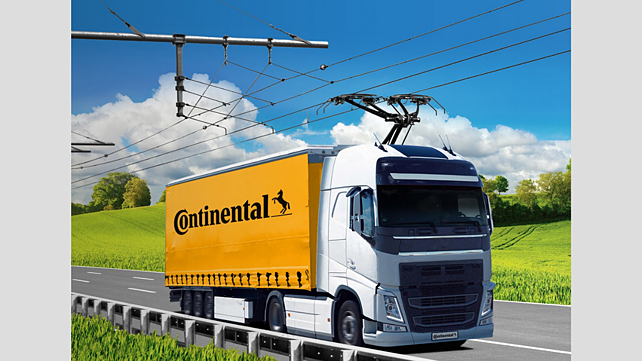
With an aim is to electrify critical sections of the highway network with an overhead line system and thus significantly reduce CO2 emissions from trucks, in line with EU regulation 2019/1242, Continental Engineering Services (CES) and Siemens Mobility will collaborate to develop and produce current collectors for trucks, called pantographs.
The new partnership will bring together the expertise of CES, which is Continental’s development and production service provider and Siemens Mobility, a specialist in rail electrification.
Both companies are now pooling their expertise to quickly achieve volume production of current collectors, thus making them available for widespread use in Europe.
The eHighway technology supplies trucks with electric drives (e.g., hybrid, fuel cell, or battery-powered electric trucks) on heavily frequented stretches of the highway via an overhead cable. Trucks can drive entirely electrically while also charging their batteries without consuming fuel, Continental stated.
Dr Christoph Falk-Gierlinger, Managing Director, CES, said, “We are transferring the principle of rail electrification to the road. The current collectors will be developed and produced in accordance with automotive standards. The partnership between Continental Engineering Services and Siemens Mobility is a major step toward climate-neutral freight transport.”
The eHighway technology developed by Siemens Mobility is already ready for use today. Now, it is just a matter of creating the current collectors, especially for trucks, so that they can be offered to commercial vehicle manufacturers cost-effectively and in any desired number of units.
Michael Peter, CEO, Siemens Mobility, said, “Road haulage plays a central role in the battle against climate change. In Germany, it causes one-third of the transport sector’s CO2 emissions. Truck manufacturers are pursuing various concepts towards reduction. With the eHighway, Siemens Mobility has already created a ready-to-use technology for energy-efficient, cost-effective and emission-free truck traffic that can be combined with other drives. This may become the backbone for environmental protection in road haulage.”